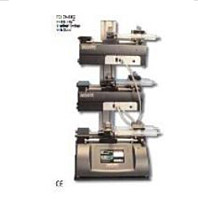A Parsimonious Method for Screening Drug Combinations for Antihepadnaviral Activity Using a Parametric Dose-Response Surface Approach
互联网
597
Hepatitis B virus (HBV) was identified as a cause of viral hepatitis more than 30 yr ago, and safe and effective hepatitis B vaccines have been available for nearly 20 yr (1 ,2 ). Nevertheless, HBV infection continues to be a global health problem, responsible for about 1.2 million deaths every year. It has been estimated that by the end of the year 2000, almost 400 million people—approx 5% of the world’s population and more than 10 times the number infected with human immunodeficiency virus (HIV)—were chronically infected with HBV (1 ). Chemotherapy remains the only option for controlling chronic HBV infection once acquired, but none of the numerous chemotherapeutic strategies used to date has proven consistently successful (3 ). Prospects for successful treatment of chronic HBV infection have improved dramatically during the past decade as a result of the development of new well-tolerated and efficacious antiviral drugs and to advances in our understanding of HBV replication and pathogenesis. Accumulating knowledge of the mechanisms of antiviral drug action and interaction and drug resistance, together with increasing awareness of their importance, have also contributed (2 ,3 ). Although the newer antiviral drugs are capable of reducing viral loads very rapidly, the initial response is invariably followed by a much slower elimination of residual virus (4 ). As more effective antiviral drugs become available, the emergence of drug resistance during the slower phase of HBV elimination will very likely replace drug-related toxicity as the most significant obstacle in the way of eventual control and ultimately elimination of HBV infection (3 ,5 ).









